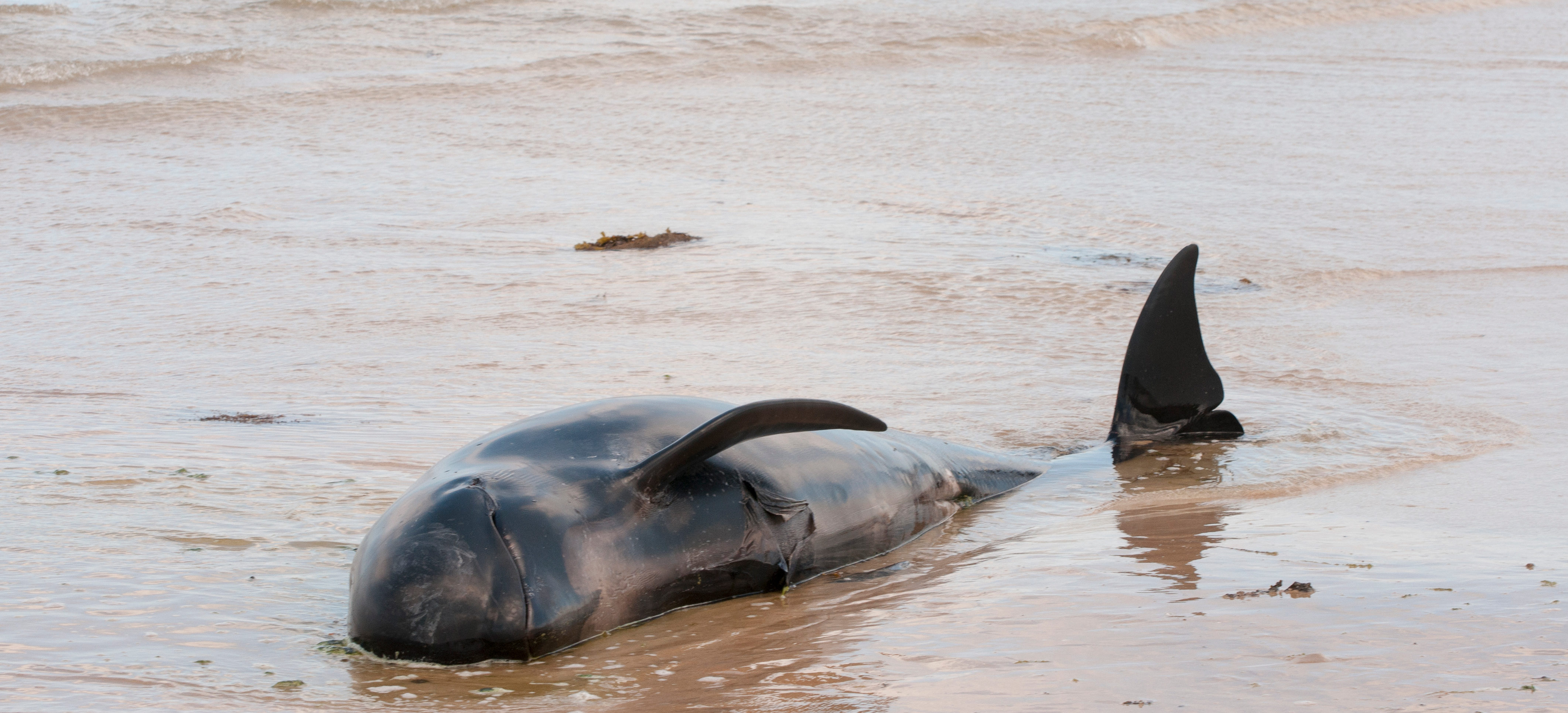
The mounting problem of plastic pollution in the world’s oceans may not have been a concern for all of the world leaders during the recent G7 summit, but it continues to affect marine life in a pretty big way.
Case in point? The story of a pilot whale that was discovered in Thailand’s Na Thap Canal recently. The animal was unable to swim and seemed to be in distress, leading environmental officials to try and help float the whale with boats. They nursed him and constructed a sunshade for him, but the whale wound up dying five days later.
So what happened? According to marine officials the whale had swallowed more than 80 plastic bags that weighed in at 17 pounds, and they had gotten lodged in its stomach and intestinal tract. The whale was unable to either digest or throw them up, and it ended up starving to death as a result. The theory is that the animal had mistaken the plastic for its typical diet of octopus, squid, and small fish, and continued eating what it thought was a food source until it ended up where it did.
The incident comes following last September’s announcement from the Ministry of Natural Resources and Environment in Thailand that it was going to come up with a road map for marine debris management given the estimated one million tons of garbage being dumped into the sea every year. Thailand, along with China, Indonesia, the Phillipines, Vietnam, and Sri Lanka, is one of the biggest offending countries.
“The right way to deal with this is to figure out how to reduce waste at home. If we have less garbage on the mainland, we will also see less garbage in the sea,” Wijarn Simachaya, the ministry’s permanent secretary, said at the time.
The department estimates that roughly 150 sea turtles, 100 whales and dolphins, and 12 dugongs die every year from eating plastic. Sadly, the death of this pilot whale is just the latest example.
“If you have 80 plastic bags in your stomach, you die,” marine biologist Thon Thamrongnawasawat told Agence France-Presse. “It’s a huge problem. We use a lot of plastic.”
That problem doesn’t just extend to marine life either—it’s also now translating to the food we eat. Studies have found that 73 per cent of mesopelagic fish (fish found from a depth of 200 to 1,000 meters below the ocean surface) could have microplastics in their stomachs, and are directly contaminating our food supply.
Given that 95 per cent of the plastic produced is thrown away, the stats aren’t completely surprising. But if this trend continues, there will eventually be more plastic by weight in the ocean than fish.
That’s one hell of a floating garbage patch.
